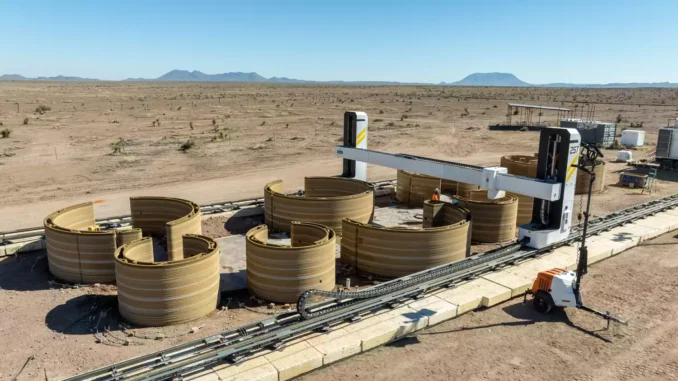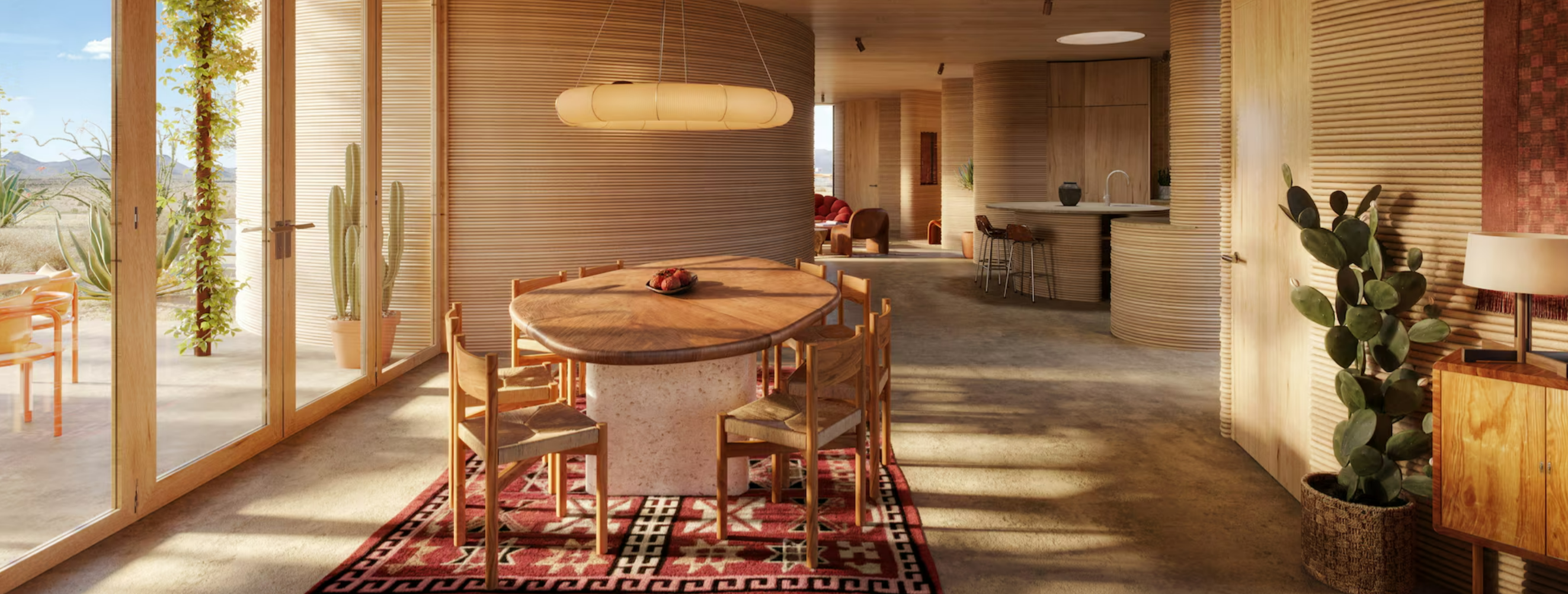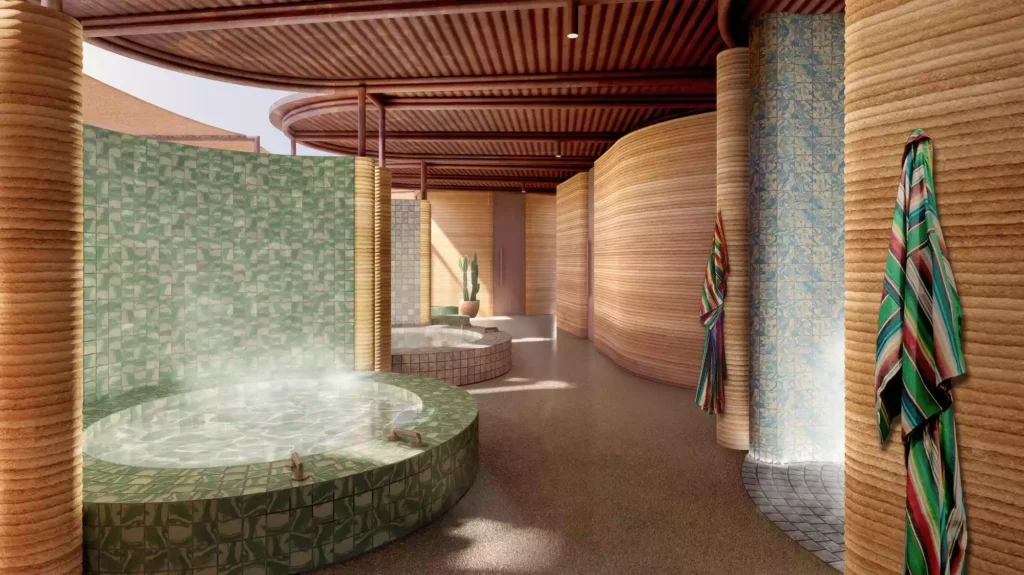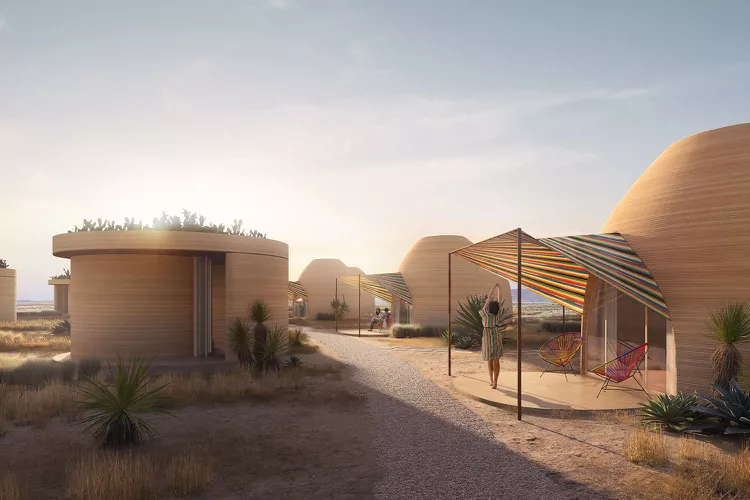
By Gavriel Shohet, HTN staff writer - 9.26.2024
Forget cookie-cutter hotels and predictable layouts. El Cosmico, the beloved campground and hotel on the outskirts of Marfa, Texas, is embarking on an expansion that’s as unique as the West Texas landscape itself. Get ready for El Cosmico 2.0, the world’s first 3D-printed hotel, a project that’s pushing the boundaries of both architecture and construction technology.
Imagine a 3D printer, not the kind that fits on your desk, but one the size of a crane, meticulously layering concrete to create structures that seem to rise organically from the desert floor. That’s the scene unfolding in Marfa, where El Cosmico is adding 43 new hotel units and 18 residential homes across 60 acres, all thanks to the magic of 3D printing. This expansion isn’t just about adding more rooms; it’s about creating a new kind of experience, one that blends seamlessly with the natural beauty and artistic spirit of Marfa.

This ambitious project is a collaboration between El Cosmico owner Liz Lambert, known for her innovative approach to hospitality, Austin-based 3D printing company ICON, and the renowned architects of Bjarke Ingels Group. The result is a fusion of cutting-edge technology and artistic vision, creating a hotel that’s unlike anything the world has ever seen.
“Most hotels are contained within four walls and a lot of times you are building the same unit over and over and over again,” Lambert explains. “I’ve never been able to build with such little constraint and such fluidity … just the curves, and the domes, and the parabolas. It’s a crazy way to build.”
ICON’s Vulcan 3D printer, a behemoth of a machine standing 15.5 feet tall and spanning 46.5 feet wide, is the star of the show. It glides across the construction site, its robotic arm extruding a special cement-based mixture called Lavacrete, layer by layer, to form the walls of the hotel units and residences. The result is a collection of structures with sinuous curves, rounded edges, and architectural features that would be prohibitively expensive to create with traditional construction methods. Imagine sweeping arches, vaulted ceilings, and walls that undulate like the nearby sand dunes – all made possible by the precision and flexibility of 3D printing.

The first two units under construction, a three-bedroom residential space and a single-room hotel unit, showcase the potential of this technology. Their 12-foot-high walls, a warm beige hue thanks to the Lavacrete’s unique properties, flow seamlessly into rounded corners and arched doorways, creating a sense of organic harmony with the surrounding desert landscape. The interiors, too, will reflect this connection to nature, with natural light flooding in through strategically placed windows and a minimalist aesthetic that emphasizes the beauty of the raw materials.
While the technology is undeniably impressive, the human element remains crucial. ICON CEO Jason Ballard emphasizes the importance of skilled workers who adjust the Lavacrete mixture based on weather conditions, ensuring optimal printability and strength. Humidity, temperature, and even the amount of sunlight can affect the material’s behavior, requiring a nuanced understanding of both the technology and the environment.

And even with the automation provided by the Vulcan, human hands are still needed for the finishing touches, transforming the 3D-printed structures into comfortable and inviting spaces. Artisans will add handcrafted details, local materials will be incorporated into the design, and the landscaping will blend seamlessly with the native flora, creating a truly unique and immersive experience for guests.
The El Cosmico expansion, slated for completion in 2026, is a testament to the transformative potential of 3D printing in the construction industry. It’s not just about speed and efficiency; it’s about unlocking new levels of creativity and pushing the boundaries of architectural design. As Lambert puts it, “It’s a crazy way to build,” but the results are undeniably captivating, offering a glimpse into a future where technology and artistry converge to create truly unique and inspiring spaces. El Cosmico 2.0 is poised to become a destination in itself, attracting travelers seeking not just a place to stay, but an experience that challenges their perceptions of what a hotel can be.
